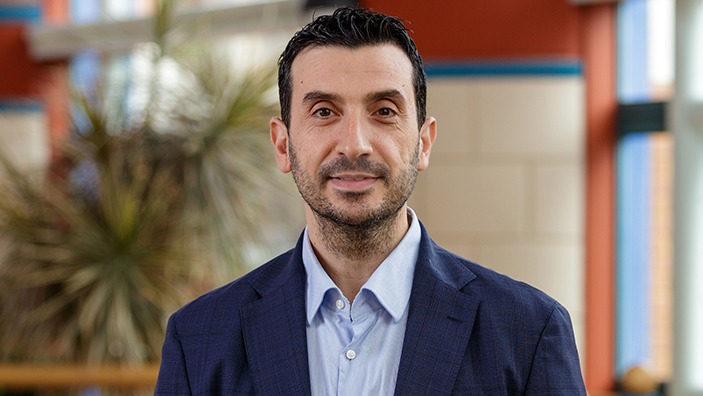Many famous companies today began as very different entities, and evolved to meet shifts in trends, markets and competitive opportunities. Nokia, the Finnish company known for mobile phones and telecommunications equipment, began in 1865 as a paper mill operation and then moved into rubber boots. WPP, the advertising giant that owns such global agencies as Ogilvy and Hill+Knowlton, was founded as Wire and Plastics Products, a maker of shopping baskets. Pearson, the educational publisher, began as a Yorkshire building and engineering company that was later involved in projects like railroad tunnels under the East River in New York and electrification projects in South America.
The managers of these companies adapted over many decades to reshape their firms by moving into new and different areas, and they did so through resource allocation – the subject of much research at Cambridge Judge Business School.
Such resource allocation can take the form of M&A (mergers and acquisition) or divesting some business units to free up capital for acquiring other businesses deemed more promising for the future. It can take the form of shifting financial and human resources from one existing business unit to another to seize more profitable opportunities within the existing portfolio – through, for example, project selection or shifting emphasis among competing opportunities and the choice of products to expand into or focus on more intently. For some organisations, resource allocation involves moving investment among stocks, bonds, cash and other assets depending on investment goals and risk appetite.
Why resource allocation is the CEO’s most critical responsibility
In fact, some business scholars consider resource allocation the fundamental task of CEOs and other top corporate managers.

“CEOs and top managers are centrally involved in choosing the direction and rate of the growth of firms as they conceive and perceive new opportunities,” says Yasemin Kor, Beckwith Professor of Management Studies, who has written several studies on resource allocation. “It is a fundamental task of CEOs and senior executives to engage in the screening and co-ordination of different growth and renewal initiatives, which involves imagining how to reallocate, combine and deploy resources. These entrepreneurial decisions and judgment calls can become highly complex as firms expand their product and geographical scope through diversification.”
Beyond resource allocation in corporate management, academics at Cambridge Judge Business School have researched other aspects of resource allocation including in social innovation and long-term investing. So what are some of the lessons to be learned from this resource allocation research at Cambridge Judge?
The hidden risk: how inertia in resource allocation threatens competitiveness
One thread of scholarship at the Business School focuses on inertia in resource allocation. A 2018 paper co-authored by Yasemin found an inverse U-shaped relationship between firm performance and the degree to which companies adjust their resources among their strategic business units, with optimum results coming when firms adopt a balanced approach that is neither exhibits inertia in resource allocation patterns nor involves too much change that can be disruptive to capability development.
Underlying such research is the understanding that inertia in resource allocation – defined as firms’ insufficient responsiveness in adjusting resource allocation across business units – hinders competitive advantage and adaptation. Yet there has been relatively little research into such inertia and ways to combat it.
Further research by Yasemin and her academic colleagues Niklas Lindlbauer, a Cambridge Judge PhD alumnus and now Assistant Professor at King’s College London, and Kulwant Singh, Cambridge Judge Fellow and Professor at National University of Singapore, addresses this gap in knowledge, finding that such inertia increases when firms diversify into unrelated areas. This results in greater information complexity and increased detachment of headquarters from the activities of these various business sectors, making it difficult for headquarters to comprehensively understand the unique needs of each business unit for adjustments. The research defines information complexity as the “degree to which the information required for a decision is dispersed at multiple locations with varying content and structures across the firm’s different units, thereby increasing the difficulty of its communication, integration, and interpretation in supporting decisions”.
The study finds that this inertia disadvantage diminishes, however, in dynamic environments where there is strong competition requiring faster action in utilising private information not widely available in the marketplace. In addition, such inertia recedes if there is recent experience in entering new markets and organisational slack, or excess financial or human resources that exceed a firm’s immediate operational needs. Such slack serves as a buffering mechanism enabling greater absorption of unexpected shocks and disruptions.
3 ways that HQ detachment and data complexity stop managers from using private information
The research by Yasemin identifies 3 key reasons why headquarters detachment and information complexity cause constraints on the use of such private information by managers:
1
Collecting and monitoring information
In collecting and monitoring information, dissimilarity of product markets increases the difficulty in detecting trends affecting each business unit and the company. “This increases the risks of missing signals calling for strategic change and reduces adjustments in resource allocation”.
2
Integrating information across business units
Integrating information across different business units is especially difficult following diversification into unrelated sectors, “due to the different nature of the customers, competitors, markets, and environments across businesses”.
3
Interpreting information
In interpreting information, there are increased risks in firms with diverse sectors losing or not recognising important information, and missing cues calling for change. “While firms operating in related markets face similar trends, the scale and complexity of the challenges are likely to be more substantial for firms with unrelated diversification.”
Says Yasemin: “While the headquarters (HQ) often benefits from a broader spectrum of managerial capital – including superior knowledge of various management systems, controls and technology – this expertise can only deliver value when it is complemented with business unit-specific knowledge and managerial expertise. Accumulating this unit-specific knowledge and expertise takes time, particularly when the HQ oversees a high number of dissimilar businesses. Under these conditions, the corporate HQ may suffer an information disadvantage vis-à-vis units and a dearth of unit-specific knowledge, which can result in reduced levels of activity or increased inertia in capital allocation.”
Leaders need to act now: branching into unrelated markets can slow down resource decisions
The findings resulted from an examination of resource allocation at 340 diversified listed firms in the US, covering the period 2001 to 2017. The 2001 starting date was chosen because a new Financial Accounting Standard required more detailed segment-level reporting, which enabled an examination of resource allocation at the business unit level. The new standard was adopted in 1998, and the authors chose 2001 as the start date to allow companies to adapt to the new rules.
The managerial implications of the findings include a warning to senior leaders of the inertia-inducing effect of unrelated diversification, urging them to balance these challenges against the benefits of such diversification. “In light of the diversification-inertia relationship, there is the risk of failing to make sufficient adjustments in resource allocations, which can have negative consequences for the timely development and renewal of SBU (strategic business unit) capabilities, and for adjustments in the firm’s market entry, expansion, and exit activities,” the research concludes.
And while the authors recognise that firms may pursue high levels of unrelated diversification due to customer pressure, the need to broaden the product offering and the desire to capitalise on opportunities posed by new technology, they urge business leaders to identify mitigating strategies to combat the resource allocation inertia that can stem from such unrelated diversification.
The research draws from a previous study by Yasemin and her co-author Danchi Tan that explores the debate over the advantages and disadvantages of appointing a new CEO internally. The research on CEO succession finds that new growth opportunities are more likely to be pursued by an internal CEO candidate who has versatile human capital accumulated through experience such as in international operations, multiple firm functions such as marketing and finance, and roles in related industries.
“Prior research offered competing theory and mixed evidence regarding the benefits of firm-specific experience,” that prior research concluded. “Our resolution is to suggest that the value of such experience depends on the other experiences it is combined with. We theorised and found evidence that firms can escape growth-constraining effects of firm-specific managerial experience when CEOs also possess versatile experiences.”
Inspiration from female scholar’s pioneering work
Yasemin says her interest in resource allocation goes back to her PhD dissertation and the influence on her research of the pioneering 1959 book, The Theory of the Growth of the Firm, by scholar Edith Penrose.
“Her work always resonated with me,” says Yasemin. “In my dissertation I looked at the success of medical and surgical companies post-IPO (initial public offering), and how this success related to the managers’ experience and their interactions with certain types of resources and capabilities, as this can influence their decisions on directions of growth and the pacing of growth.
“The decisions companies face about which areas to diversify into or grow into requires clear ideas on how you allocate or re-allocate the firm’s resources, so it’s important to have imagination and insight relating to this. Resource allocation might be seen as a micro decision, but it is a crucial part of the bigger and broader decisions of how you grow the company and what new businesses or territories you enter,” says Yasemin.
The decisions companies face about which areas to diversify into or grow into requires clear ideas on how you allocate or re-allocate the firm’s resources, so it’s important to have imagination and insight relating to this.
Diversification and decision-making: the challenges of managing complex business portfolios

Other Cambridge Judge faculty involved in resource-allocation research include Stelios Kavadias, Margaret Thatcher Professor of Enterprise Studies in Innovation and Growth, and Christoph Loch, Professor of Operations and Technology Management and former Director (Dean) of the Business School, whose focus is on project selection.
In a 2022 study, Stelios and Christoph examined the processes companies follow to select the right innovation projects that are allocated the necessary resources to succeed. After reviewing portfolio management approaches and research over many decades, they suggested that shortcomings of portfolio management processes often result from an overemphasis on project selection from a list of candidate projects, which tends to focus on generic methods of selection that are not customised to the organisation’s specific strategy.
“As a result, the creation or assembly of initiatives that cover the strategic innovation goals of the organisation, in other words, portfolio design as a creative process, has been neglected,” the research says.

“The result has been sophistication but little alignment with the specific strategic aims of the organisation. We propose that a focus on portfolio design, followed by portfolio evaluation and management (with iteration feedback) may at least mitigate the widely observed challenges.”
From project selection to portfolio design: rethinking innovation strategy
Research co-authored by Stelios Kavadias and Nektarios Oraiopoulos, Professor of Operations and Technology Management, examined project selection in the pharmaceutical sector. It explored the effect that projects by rival drug firms have on decisions to progress a drug from preclinical laboratory trials to clinical trials in humans. They found that early-stage rival projects are associated with a decreased likelihood of a drug firm choosing its own product to compete in the same market, whereas late-stage rival projects are associated with an increase in the likelihood of selection because such rival projects signal technological feasibility.
“Project selection decisions are complex because they must balance not only financial returns, project risk, and fit with strategy, but also competitive circumstances,” says the study, which looks at the period 1999 to 2016. “A rival’s project development efforts provide 2 pieces of information: a market rivalry signal, indicating potentially heightened competition in a market, and a technological signal, indicating a possible solution to a problem in that market.”

Adds Nektarios, “An important aspect of our study involves the extent to which knowledge accumulation in the drugs sector can improve a new product’s likelihood of success. There is substantial knowledge spillover in pharmaceutical research and development area, so given the volume of such information managers need to be able to sift through to understand which information improves their chances of success – and apply such understanding to their crucial decisions on whether to allocate substantial resources to moving a drug to clinical trial.”
A separate study co-authored by Nektarios and Donald Drakeman, a Fellow at Cambridge Judge, developed a framework for driving innovation in the pharmaceutical industry under highly ambiguous conditions, and this research also focuses in part on resource allocation to product discovery. The research found that the biotech industry has been responsible for the creation of more path-breaking medicines than the pharmaceutical industry, and at a much lower overall cost. The authors found that big pharma allocated much more research and development funding to product discovery than did the biotech industry, but large drug firms concentrated those resources in a far smaller number of products.
“A key managerial implication from our analysis is that resource allocation processes need to match the particular properties of the innovation environment,” the study says. “We conclude that involving many independent decision makers is the best strategy in environments characterised by ambiguity, where innovative efforts seek to create unprecedented path-breaking products.”
This strategy is the most effective because it can maximise the opportunities for success by taking advantage of new knowledge as it develops somewhat randomly and often serendipitously, “by creating an environment that will encourage trying many things, and by ruthlessly abandoning the ones that do not work out. Such an approach is also consistent with the growing literature on entrepreneurship that stresses the importance of wide experimentation in generating breakthrough discoveries.”
Bottom-up vs top-down resource allocation: which strategy works best?
Research on strategic resource allocation in new product development (NPD) by Jeremy Hutchison-Krupat, Associate Professor in Innovation and Operations Management, and Stelios Kavadias examined how senior management chooses between a decision process that dictates the resource allocation level (a top-down approach) or one that cedes control to project managers who may have more precise information (a bottom-up approach). The research, which examines the information asymmetry between top management and people closer to the ground, concludes that while there is no single best approach, bottom-up processes can be beneficial for more challenging initiatives that may be difficult or risky, as any downside that could come from ceding control is offset by the benefits of enabling a manager to tailor their resources to the specific characteristics of the initiative.

“We also find that the culture of a firm, specifically the organisational penalty imposed on managers of failed initiatives, can have a significant effect on the scope that a firm chooses for strategic initiatives,” says the study. “Higher penalties drive firms to forgo more open-ended (broadly scoped) initiatives even when they represent a positive contribution to the profit of the firm.”
The research also delves into the concept of ‘strategic buckets’, or firms’ strategies of separating investments into different containers that reflect varying financial aims and time horizons.
“Something that we found powerful, that on reflection, might not come across in the published article, is the fact that prior to this work the dominant rationale for the use of strategic buckets was to protect resources for the long-term, riskier initiatives,” says Jeremy. “However, what our paper shows is that they are more than this: our paper places emphasis on the fact that strategic buckets can be an important way to align resource allocation with the strategy. In academic terms, they can be an information-revelation mechanism. In practical terms, once we shift the focus away from just protecting resources and to strategic alignment, it places emphasis on the need to articulate what the bucket seeks to achieve, and this is a really important distinction.”

A related study by Konstantinos Ladas, Research Associate at Cambridge Judge, Stelios and Jeremy, published in the journal Evolutionary Human Sciences, highlights the interplay between the prevalence of various modes of learning and the uncertainty that surrounds resource provision.
“Uncertainty over the provision of resources at the individual level is a common occurrence in public and private organisations, as it has been over many centuries” including allocation of resources in Mesopotamian times, says the research. “Given an overall set of resources, public and private organisations alike employ established allocation mechanisms to split these resources between the different activities as they seek to fulfil multiple objectives. In this manner, these allocation mechanisms partition the organisation’s total resources.”
The study concludes further that the key role played by resource allocation mechanisms within populations may have profound effects on social performance, and urges further research on this “in the same spirit as with models of cultural evolution, which were initially developed in anthropology and biology but have increasingly been used to study the evolution of human behaviour to examine technological accumulation and to advance our understanding of cultural dynamics in psychology.
Resource allocation in entrepreneurship, including social enterprises: balancing mission and sustainability

In entrepreneurship, including the launching and operation of social enterprises, navigating limited resources is an essential part of the puzzle – particularly at the early stages of a venture. So strategic allocation of resources is critical.
“This often involves bootstrapping, or the use mostly of personal funds, and leveraging certain resources to gain other resources,” says Monique Boddington, Management Practice Associate Professor and Director of the Master in Entrepreneurship programme at Cambridge Judge. “Prioritisation is crucial, as resource constraints also dictate the way entrepreneurs evolve their businesses.”
Monique says this approach mirrors aspects of effectuation, as outlined in an influential 2001 article by Professor Saras Sarasvathy of the Darden School of Business at the University of Virginia.
Effectuation operates on 5 core principles:
1
Focus on available means
Focus on using means available, based on the person’s own abilities, experience and networks.
2
Focus on affordable loss
Focus on the loss that can be afforded, which allows for cheap failure that can lead to refinement of the idea and new opportunities.
3
Form strategic partnerships
Form strategic partnerships that bring new ideas and avenues, rather than simply seeking to beat competitors.
4
Embrace surprises
Embrace surprises by leveraging contingencies, which can turn the unexpected into the profitable. This is known as the lemonade principle of entrepreneurship, in which lemons are made into lemonade, lemon cake and anything else that springs to the imagination.
5
Control the controllable
Control aspects that can be controlled, which allows entrepreneurs to strive to create the future rather than simply adapting to it. This is known as the pilot in the plane principle, in that airplane pilots emphasise control but do not navigate alone. Likewise, entrepreneurs navigate with many stakeholders including investors, customers and partners.
As an example cited by the article author in a subsequent book, serial entrepreneur Richard Branson launched Virgin Atlantic Airlines by controlling the downside risk of what he could afford to lose. The upside followed, but this was not the initial focus.
“Entrepreneurs, instead of starting with a fixed goal and then seeking the necessary resources, often leverage the resources already available to them,” says Monique. “This helps them better navigate an uncertain environment, being flexible and experimenting, reallocating resources based on evolving opportunities rather than rigid plans. The key to resource allocation for entrepreneurs is to stay adaptable, operate lean and innovate quickly.”
In social enterprise, resource allocation is crucial to operational success and longevity

An examination of such resource allocation by Helen Haugh, Associate Professor in Community Enterprise, found that social entrepreneurs leverage competing demands by developing new services, products and products. The research identifies 12 types of competing demands at institutional, organisational and individual level, including cost-usefulness of performance measures, network benefits-constraints and risk taking-risk aversion.
Helen’s research also looks at the importance of social enterprise directors and trustees working closely together in proposing, reviewing and evaluating strategic decisions, because “the active role and involvement of trustees in strategising is integral to social enterprise strategy development and implementation”.
Research by Paul Tracey, Professor of Innovation and Organisation and Co-Director of the Cambridge Centre for Social Innovation, examines the social enterprise tension between allocating resources to commercial activity and social needs.
“A central task of social enterprise managers is to learn how the social and commercial components of their organisation feed off each other, either in a virtuous or vicious way,” the research says. “Keeping these forces in kilter ensures a virtuous cycle and ultimately organisational sustainability. However, if one force is allowed to overly dominate organisational effort, the loop can reverse and a vicious cycle with a downward spiral is a likely dynamic.”

The study outlines 3 strategic options for social enterprise managers, each with their own challenges and promise:
- Separate the social and commercial mission of an enterprise
- Integrate those 2 missions
- Build alliances with for-profit businesses
A related separate study by Paul explored how resource allocation decisions contributed to the collapse of a social enterprise in the southwestern England city of Bristol designed to help the homeless. “The entrepreneurs started investing too much in the social side of the venture, which undermined the commercial viability of the venture, then too much in the commercial side, which undermined its legitimacy in the homeless support sector,” says Paul.
The study outlines how social enterprises can create new hybrid organisational forms through a process termed ‘bridging institutional entrepreneurship’, which operates at 3 different levels:
- The individual level: bridging institutional entrepreneurs frame a problem differently and then develop a new solution through counterfactual thinking
- The organisational level: such entrepreneurs design an organisational template and develop an explanation for why this particular template is appropriate for the problem framed
- The societal level: bridging institutional entrepreneurs work to legitimate the new form by aligning with the appropriate stakeholders
Long-term investing: what university endowments teach us about strategic asset allocation

The work of the Centre for Endowment Asset Management (CEAM) at Cambridge Judge focuses on various aspects related to long-term investing, including the patterns of returns of different asset classes – so resource allocation by investors runs throughout the Centre’s work. The Chairman of CEAM, Professor of Finance Elroy Dimson, is a co-author of the annual Global Investment Returns Yearbook published by investment bank UBS, which looks at how stocks, bonds and bills have performed over the past 125 years in markets around the world.
In an article for the 75th anniversary edition of the Financial Analysts Journal, Elroy and co-authors including David Chambers, Invesco Professor of Financial History and CEAM Co-Director, looked at how major university endowments shifted their asset allocations toward riskier assets over many decades. The article documented how major US universities, led by those from the Ivy League of elite universities, shifted from bonds to stocks in the 1930s and 1940s, and then shifted from stocks to alternative assets such as hedge funds and private equity beginning in the 1980s.

“University endowments are one of the oldest classes of institutional investor. They focus on a distinctively long horizon and have pursued an approach that many investors subsequently adopted,” says the research.
In their most recent publication, Elroy and David and 2 co-authors study investment performance in the UK and US from 1800 to the present day. They report lower stock market returns in the 19th and 21st centuries than in the 20th century, and urge investors to be cautious about allocating resources based on limited experience. “Using as much historical data as possible helps investors form better return expectations,” the authors conclude.
Key lessons for business leaders from Cambridge Judge research
The evolution of successful businesses over time demonstrates that adaptability is essential rather than optional. As markets, technologies and customer needs change over time, so too must companies and other organisations to remain competitive. The research at Cambridge Judge outlines the necessity of such resource allocation to seize promising opportunities, but also the potential pitfalls.
Sound management is of course essential to successful resource allocation, but the research at Cambridge Judge also underlines the importance strategic foresight and organisational awareness in balancing competing demands. From reallocating capital among business units to managing investment portfolios, the research highlights how resource allocation is an ongoing and dynamic process that requires astute management to align with a firm’s mission and capabilities. In so doing, the insights from Cambridge Judge provide valuable guidance for businesses facing increasing complexity and rapid change.
Featured research
Lindlbauer, N.M., Kor, Y.Y. and Singh, K. (2025) “Unpacking the inertia in resource allocation adjustments of multi‐business firms.” Strategic Management Journal
Lindlbauer, N.M. and Kor, Y.Y. (2018) “The microfoundations of the corporate-level resource allocation process.” Academy of Management Proceedings
Kor, Y.Y. and Tan, D. (2023) “Interactive effects of CEOs’ firm-specific experience and versatile experiences on pursuit of new growth opportunity.” Journal of Management
Lindlbauer, N.M. and Kor, Y.Y. (2019) “Re-allocation of resources in the multi-business firm: dynamism vs. persistence.” Academy of Management Proceedings
Drakeman, D. and Oraiopoulos, N. (2020) “The risk of de-risking innovation: optimal R&D strategies in ambiguous environments.” California Management Review
Moizer, J. and Tracey, P. (2010) “Strategy making in social enterprise: the role of resource allocation and its effects on organizational sustainability.” Systems Research and Behavioral Science
Chambers, D., Dimson, E., Ilmanen, A. and Rintamäki, P. (2024) “Long-run asset returns.” Annual Review of Financial Economics
Kavadias, S. and Hutchison-Krupat, J. (2020) “A framework for managing innovation.” Pushing the Boundaries: Frontiers in Impactful OR/OM Research
Si, H., Kavadias, S. and Loch, C. (2022) “Managing innovation portfolios: from project selection to portfolio design.” Production and Operations Management
Ladas, K., Kavadias, S. and Hutchison-Krupat, J. (2023) “Cultural evolution with uncertain provision of learning resources.” Evolutionary Human Sciences
Thirlaway, K. and Haugh, H. (2015) “Exploring responses to conflicting demands: theorizing from a study of social entrepreneurs.” Academy of Management Proceedings
Markou, P., Kavadias, S. and Oraiopoulos, N. (2023) “Rival signals and project selection: insights from the drug development process.” Management Science
Moizer, J. and Tracey, P. (2010) “Strategy making in social enterprise: The role of resource allocation and its effects on organizational sustainability.” Systems Research and Behavioral Science





